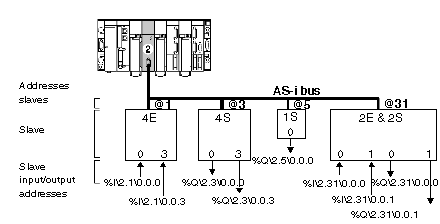|
|
(Original Document)
|

|
Family
|
Item
|
Values
|
Indicates
|
|---|---|---|---|
|
Symbol
|
%
|
-
|
-
|
|
Object type
|
I
Q
|
-
-
|
Picture of the physical input of the module,
Picture of the physical output of the module,
This information is exchanged automatically each cycle of the task to which they are attached.
|
|
Bus and slave No.
|
b
|
1 to 999
|
Bus number.
Except the value 2 if Fipio is used.
|
|
e
|
1 to 31
|
Slave Number
|
|
|
Rack number
|
r
|
0
|
Virtual rack number.
|
|
Module position
|
m
|
0
|
Virtual module position
|
|
Channel
|
c
|
0 to 3
|
Input or output number
|
